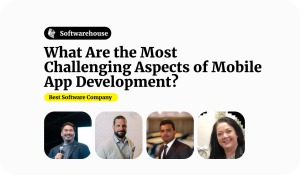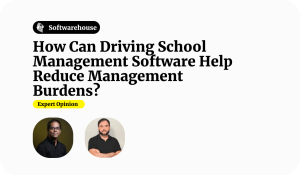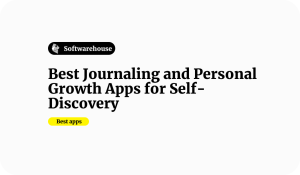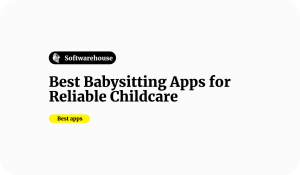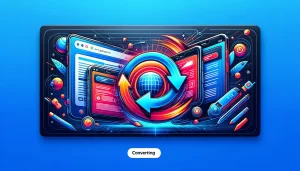What are the must-have tools, cutting-edge tips, and emerging trends you recommend for building a successful e-commerce website in 2024? Here is what 12 thought leaders have to say.
- Essential E-Commerce Tools and Trends
- Prioritise Post-Purchase Experience
- Integrate AI-Powered Recommendation Engines
- Incorporate Strong Platforms and Analytics
- Choose Right Tools, Embrace One-Click Checkout
- Focus on User Experience and Site Speed
- Leverage Data-Driven Tools and AI
- Embrace AI Analytics and Headless Commerce
- Use Webflow and Optimise for Voice Search
- Utilise Multiple Sales Channels and SEO
- Implement Personalisation and Immersive Experiences
- Combine Essential Tools with Innovative Strategies
Essential E-Commerce Tools and Trends
In 2024, to build a successful e-commerce website, you need a few essential tools to keep up with new trends. First, use an e-commerce platform like Shopify or WooCommerce to manage your products, payments, and customer information easily. Adding AI tools that offer product suggestions can help increase sales by showing customers items they might want. Use a responsive design builder to ensure your site looks good on computers and mobile devices.
Pay attention to trends like sustainability, as more people are interested in eco-friendly products. Highlighting your store’s green practices can make you stand out. Lastly, various payment options, including digital wallets like Apple Pay, should be provided to simplify checkout. Keeping up with these tools and trends will help you create a user-friendly and future-ready e-commerce site.

Shane McEvoy, MD, Flycast Media
Prioritise Post-Purchase Experience
Modern e-commerce websites must prioritise the customer’s post-purchase experience. As such, one development best practice for building e-commerce platforms is connecting them to a shipment-tracking service.
With an order-tracking service connected, e-commerce websites enable customers to conveniently track the whereabouts of their packages in real time and know the latest tracking status. This information helps to calm customer post-purchase anxiety and enhances their overall experience, ensuring loyalty.
Developers can connect the e-commerce websites they develop to shipment-tracking services through APIs or by adding a dedicated order-tracking page. APIs enable merchants to also keep track of package movements and react to shipping exceptions before they escalate. On the other hand, tracking pages allow customers to monitor their packages without contacting support.
Clooney Wang, CEO, TrackingMore
Integrate AI-Powered Recommendation Engines
The key in 2024 is integrating AI-powered recommendation engines, which we’ve done successfully at Webvisio to increase conversion rates. Utilising WooCommerce with plugins like YITH for tailored product suggestions has been a game-changer. Additionally, embracing voice-search optimisation has opened new avenues for customer interaction, ensuring our e-commerce platforms stay ahead of the curve in both usability and innovation.

Dan Ponomarenko, CEO, Webvizio
Incorporate Strong Platforms and Analytics
CEOs should give top priority to technologies like strong platforms, sophisticated analytics, customer support software, and CRM when developing an e-commerce website. They have to prioritise social commerce platform use, product photography of the highest caliber, smartphone optimisation, and customisation.
Headless commerce, sustainability, augmented and virtual reality, and ethical sourcing are examples of emerging trends. Businesses may obtain a competitive advantage in the ever-changing world of e-commerce by integrating these components. Businesses may gain a competitive advantage in the market by investing in these components.

Dhari Alabdulhadi, CTO and Founder, Ubuy Kuwait
Choose Right Tools, Embrace One-Click Checkout
In 2024, building a strong e-commerce website goes beyond just having a good idea—you need to choose the right tools and trends. Start by using AI to tailor the shopping experience, and think about using a headless CMS to keep your site quick and adaptable. Don’t chase every new trend; instead, focus on sustainable practices like using carbon-neutral hosting. Key tips include adding voice-shopping features and making sure your site works well on mobile devices.
Finally, ditch traditional checkout processes—embrace seamless, one-click solutions to reduce cart abandonment. These steps will not only set your e-commerce site apart but also ensure its long-term success in an ever-evolving digital landscape.

Renante Altar, Project Manager, Creloaded
Focus on User Experience and Site Speed
When it comes to building a successful e-commerce website in 2024, three key elements are essential: user experience, speed, and adaptability. First, tools like Shopify or WooCommerce remain foundational, but integrating them with advanced AI-driven personalisation engines, such as Dynamic Yield, can significantly enhance the user experience by tailoring product recommendations and content to individual shoppers. I’ve seen firsthand how this level of personalisation can boost conversion rates by as much as 30%.
Next, ensuring your site’s speed is non-negotiable. Utilising tools like Google’s Core Web Vitals for continuous monitoring and employing a Content Delivery Network (CDN) like Cloudflare can drastically reduce load times, which is crucial for maintaining a high ranking on search engines. In my experience, even a one-second delay can result in a 7% reduction in conversions.
Lastly, staying adaptable to emerging trends, such as the rise of voice search and mobile-first indexing, is critical. I recommend incorporating voice search optimisation strategies and ensuring your site is fully optimised for mobile devices. I’ve worked with clients who saw a noticeable uptick in mobile traffic and sales after making these adjustments, reflecting the importance of staying ahead of these trends.

Brandon Leibowitz, Owner, SEO Optimisers
Leverage Data-Driven Tools and AI
As the founder of an e-commerce growth agency, I heavily rely on data-driven tools and AI to gain actionable insights. Analytics software lets me identify high-converting products, effective promotions, and peak traffic periods based on historical data. I then optimise sites to match these trends.
Chatbots and virtual assistants provide an automated yet personalised customer experience. We’ve implemented chatbots that resolve common questions and recommend products based on a shopper’s browsing history. This convenience boosts conversions and keeps customers engaged.
To anticipate future opportunities, I follow emerging technologies like virtual reality and voice commerce. Though nascent, VR product previews and voice-activated smart speakers show promise for creating immersive shopping experiences. We’re experimenting with these innovations to improve the customer experience and stay ahead of competitors.

Chase Chappell, Founder, Sirge
Embrace AI Analytics and Headless Commerce
One must-have tool I always recommend is an AI-powered analytics platform like Google Analytics 4 (GA4). This new version is designed for the future of data collection, offering deeper insights into customer behavior and more accurate tracking of the entire user journey across devices. Understanding these analytics can help you make informed decisions that enhance user experience and boost conversions.
Another tip is to fully embrace automation. From automated email marketing campaigns to inventory management systems, the more you can automate, the more time you’ll have to focus on strategy and growth. Tools like Klaviyo for email and SMS marketing, or Shopify Flow for automating repetitive tasks, can save you hours and ensure that your operations run smoothly, even as you scale.
In terms of emerging trends, headless commerce is something to keep an eye on. By decoupling your front end from your back end, you gain greater flexibility and speed in delivering content to customers. This approach is particularly beneficial for businesses that want to create highly customised and unique shopping experiences across multiple platforms, whether it’s your website, a mobile app, or even voice commerce.
Social proof is also more important than ever. Today’s consumers are savvy—they read reviews, watch unboxings, and look for user-generated content before making a purchase. Incorporating customer reviews, testimonials, and even influencer partnerships directly into your site can build trust and drive sales. And let’s not forget the rising trend of live shopping events. Hosting live streams where you showcase products in real time and interact with your audience can create a sense of urgency and excitement that drives immediate purchases.
2024 will continue to see a focus on personalised and immersive experiences. Incorporating AR and VR technologies to allow customers to virtually try before they buy, or explore products in a 3D environment, can make your e-commerce site stand out. The key is to constantly innovate and offer something new that keeps customers coming back—not just for your products, but for the experience your brand provides.

Chris Bajda, E-commerce Entrepreneur & Managing Partner, Groomsday
Use Webflow and Optimise for Voice Search
I would recommend the following for e-commerce success in 2024:
We leverage Webflow to build visually stunning yet powerful e-commerce stores. Its design flexibility and integrated CMS allow us to quickly create unique brand experiences. E-commerce templates and plugins improve functionality without coding. Since focusing on Webflow, our client revenue and site performance have soared.
VR and AR are changing online shopping. We’re testing virtual product experiences on select client sites. Early results show double-digit lifts in conversion and reduced returns. Implementing VR product views establishes a competitive edge and drives brand loyalty.
We drive targeted traffic and boost revenue through Google Smart Shopping campaigns. These AI-optimised ads automatically show products to interested shoppers across Google. For one client, Smart Shopping campaigns increased transactions by over 50% at a lower cost per conversion. E-commerce brands should leverage Google’s machine learning to scale high-performing ads.
Voice search continues gaining popularity, so we optimise content for conversational search. Ensuring product info and site content are indexed for voice helps brands rank higher in voice search results. Brands appearing on the first page of voice search can see significant increases in traffic and sales. Optimising for voice is a must in 2024.

Alexander Palmiere, Founder & CEO, Refresh Digital Strategy
Utilise Multiple Sales Channels and SEO
To build a successful e-commerce website in 2024, you will need a strong stack of multiple sales channels. Shopify is great because it allows you to fully build and customise the brand experience while providing the basic components of the sales cycle without any major coding necessary. We also sell our products through Google, Meta, and the Shop App for additional exposure to local and nationwide markets.
For strong product performance on an e-commerce website, you will want to have an intentional mix of ad creatives and display ads, among other outbound marketing practices, to drive awareness. This, aligned with solid SEO practices such as keyword optimisation, ample product information, and high-quality product images, will create a streamlined customer experience, generating higher conversion rates.
In 2024, we’re seeing a number of brands adding marketplaces to their sales channel stack. Marketplaces such as Amazon, Walmart, and Target are offering custom brand store options that can be well-integrated into a brand’s website and analytics.

Ben Wilson, E-Commerce Manager
Implement Personalisation and Immersive Experiences
First up, make sure you’ve got a killer e-commerce platform like Shopify or WooCommerce—they’re the backbone of many successful online stores. Then, get cozy with AI-powered tools for personalisation; think smart product recommendations and chatbots that make your customers feel like VIPs.
Don’t forget mobile-first design because your audience is shopping on the go. And lastly, keep your eyes on immersive experiences like AR (Augmented Reality) that let customers “try before they buy” right from their couch. Stay ahead of the curve, and your online shop will be the go-to spot!

Dania Bernard, Website Godmother, DB Creative Agency
Combine Essential Tools with Innovative Strategies
In 2024, building a successful e-commerce website requires a combination of essential tools, innovative strategies, and awareness of current trends. Here are some key recommendations:
For tools, a robust content management system (CMS) like Shopify or WooCommerce is crucial. These platforms offer user-friendly interfaces and scalability. Integrating AI-powered chatbots for customer service and personalised product recommendations can significantly enhance the user experience. Analytics tools such as Google Analytics 4 or Hotjar are vital for understanding customer behavior and optimising your site accordingly.
Emerging trends to incorporate include augmented reality (AR) for virtual try-ons, especially in the fashion and home decor sectors. Voice commerce is gaining traction, so optimising your site for voice search is becoming increasingly important. Sustainability is also a growing concern, so highlighting eco-friendly products or practices can appeal to conscious consumers. Lastly, implementing one-click checkout and diverse payment options, including cryptocurrencies, can reduce cart abandonment and boost sales.

Kyle Gier, Marketing Director, Conexwest








































